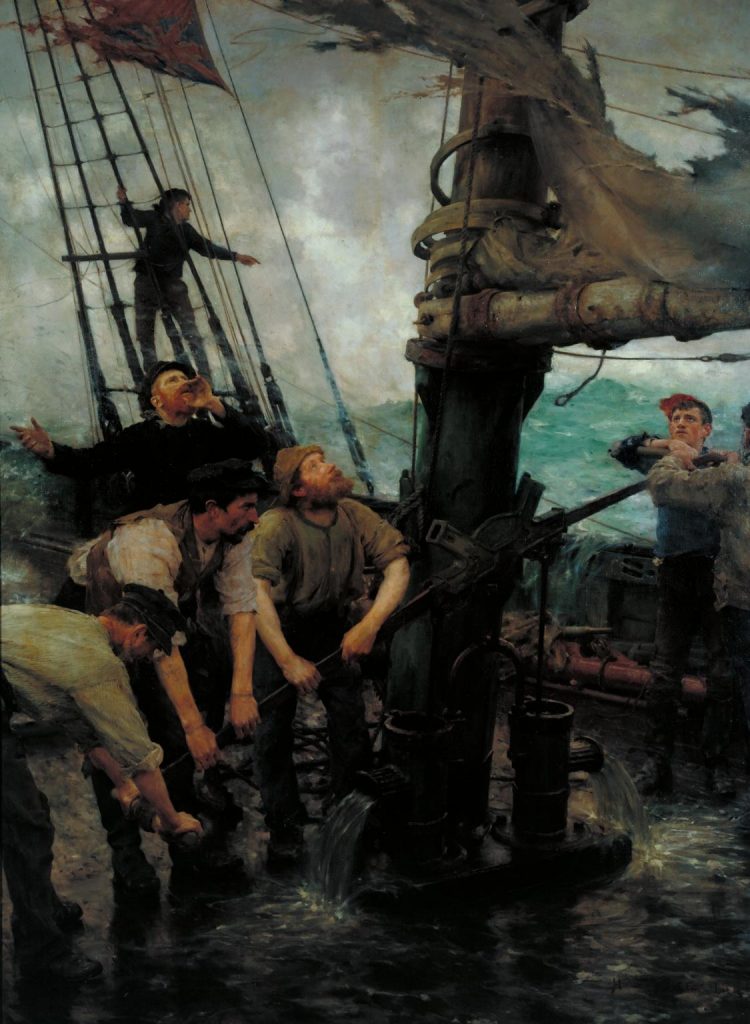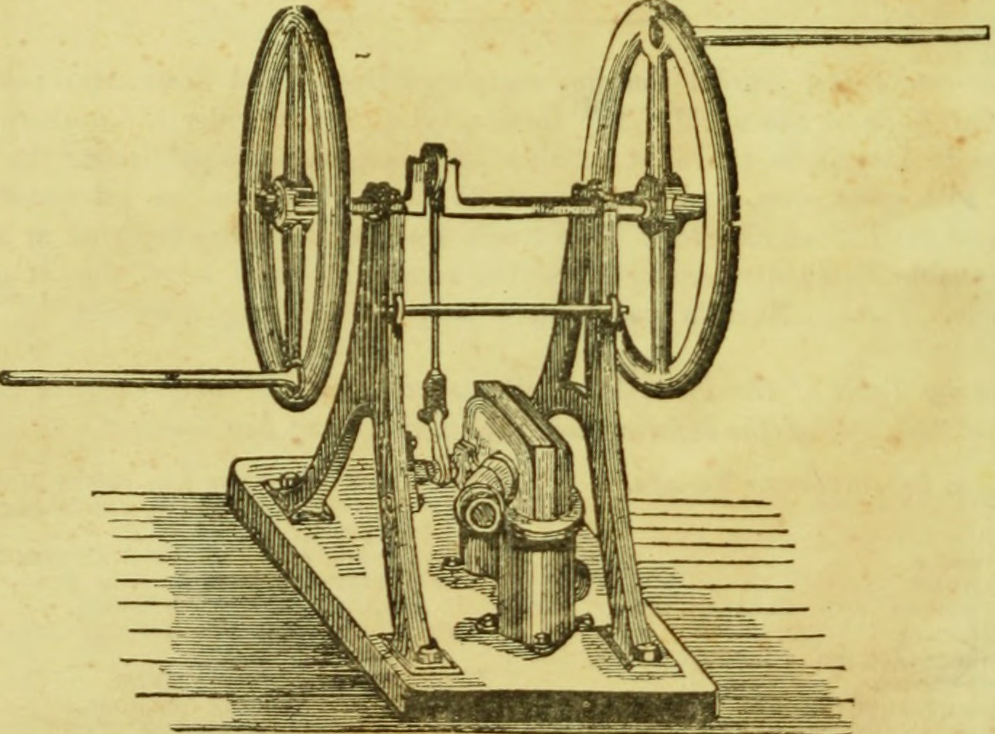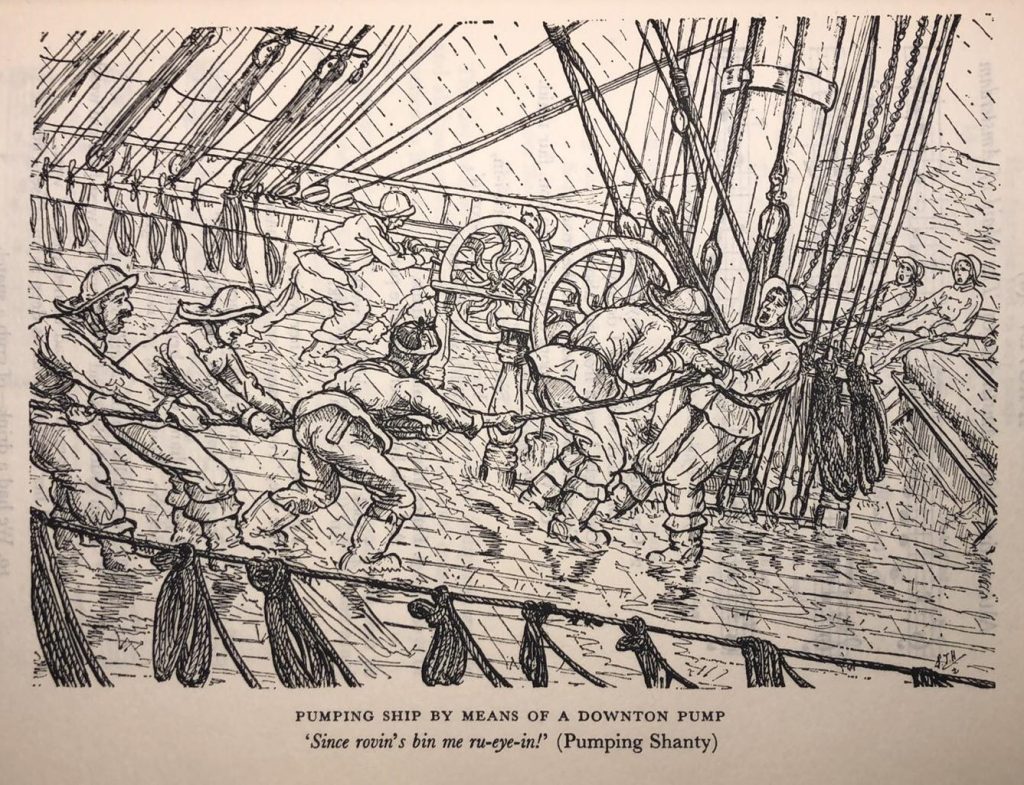In merchant sailing ships in time when the shanties were used, the hulls of the boats were made of wood. Any change in the course or tack of the sails causes the stretching or squashing of the hull by sea waters, those stretches causing leakages on the hull, and the ship taking the water. To prevent the ship from sinking water has to be pumped out from the bilge out of the board. To keep wooden ships dry sailors pump out the water many hours every day. For this, an almost never ended work shanty was a must-have tool to keep sailors merry and up and running. Were two types of bilge pumps when the Pump Shanty was used:
Pump Shanty – First, the older type of pump
The older type was a pump with two handles where pumping happens by crew placed on opposite sites. Each site worked two to four sailors. When sailors from one site had a handle above the head, another site was on the level of the ankles on the opposite side. In this case, the pumping shanties pace was as follows: the first tact, pulling the handle and pushing it up, the second pushing it down to the ankles, the third pulling the handle and pushing it up, and so on …

Hugill is making reference to this when he says “old-fashioned levers” (1961, pf. 45).
Pump Shanty – Second, the Downton type of pump
It operated on the principle of two flywheels, where the sailors on the opposite side rotated their handles on the flywheels to make the work lighter. This pump calls the “Downton” pump:

Last Clarification, the “Downton” is the name of the inventor of the pump of that type. The important distinction is the method of operation, not whether or not the pump is exactly the same as Downton’s invention. The method is to turn a wheel.
Here is one of the not too many places where we can see it at work: Traditional bilge pump worked on James Craig tall ship
The Bell Ropes
In the Downton type of pump, sailors installed on ends of bars ropes (bell-rope), to make the job easier by taking more sailors involved in pumping.

Absolutely unique and authentic video of bell ropes in use…
Here is an example in Live example of the use of the bell ropes, probably the only one existing in the world! It starts on the 24th second of this amazing movie. In 0.25 min of this super unique movie, you can watch real pumping with bell ropes:
Index Of The Pump Shanty
- A-Rovin’ (A)
- A-Rovin’ (A2)
- A-Rovin’ (B)
- A-Rovin’ (C)
- A-Rovin’ (D)
- Across The Rockies
- Alabama II
- Albertina – Glyn Davies
- A-Rolling Down The River
- Dar Gingo Tre Flickor
- Den Gamla Briggen (Swedish)
- Die Gute Alte Brigg (German)
- Es Gingen Drei Madchen
- Go Roving (Norvegian)
- Good Mornin Ladies All B
- Heave Away Cheerily O!
- John come tell us as we haul away
- Julia (Norwegian)
- Leave Her Johnny Leave Her – Pumps
- Lowlands Away (A) (i)
- Lowlands Away (A) (ii)
- Lowlands Away (B)
- Lowlands or My Dollar An’ A Half A Day
- Mister Stormalong (A1)
- Mister Stormalong (A2)
- Poor Paddy Works On The Railway
- Roll The Woodpile Down
- Santiana (A)
- Shallow Brown A
- Shallow Brown A (Sentimental)
- Shallow Brown C
- Shallow Brown – Cecil Sharp
- Skonnert Albertina – Sternvall
- So Early In The Morning (A)
- So Early In The Morning (B)
- So Early In The Morning (C)
- Stormy Along, John
- Svineper
- The Girl in Portland Street
- The Girl With The Blue Dress (Davis & Tozer)
- The Fire Ship
- The Lowlands Low (C)
- The Ox-eyed Man (Davis & Tozer)
- The Plains of Mexico (B)
- The Plains of Mexico (C)
- The Sailors Way
- Way Me Susiana!
- Way Stormalong, John
- Well Ranzo Way
My private collection of books
Shantyman library – you will see descriptions and recommendations of positions worth diving into, true sources of knowledge about sea shanties. To gain knowledge about sea shanties is the main ultimate purpose of this library, every book in this library is somehow related to sea shanties and before mast songs.
More involvement in Traditional Sea Shanties
You can find this record here or directly listen below. If you want to discuss the record or share your opinion you can do it in my Facebook forum here.

